
Schinia, commonly called flower moths, is a large genus of moths belonging to the family Noctuidae. The genus has a Holarctic distribution with the vast majority of species being found in North America, many with a very restricted range and larval food plant.

The Cochylini are a tribe of tortrix moths. It used to be classified as the subfamily Cochylinae.
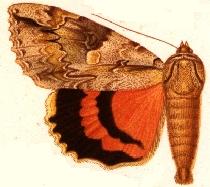
Catocala parta, the mother underwing, is a moth of the family Erebidae. The species was first described by Achille Guenée in 1852. It is found in North America from Nova Scotia south to Maryland and Kentucky, west to southern Saskatchewan and Alberta, western Montana, and Utah. The wingspan is 70–78 mm. Adults are on wing from August to September depending on the location.
Ypsolopha dorsimaculella is a moth of the family Ypsolophidae first described by William D. Kearfott in 1907. It is found throughout North America. In Canada, it is known from British Columbia, Alberta and Saskatchewan. It is known from most of the continental United States. The habitat consists of mixed wood forests, riparian areas and possibly scrubland.
Ypsolopha dentiferella is a moth of the family Ypsolophidae first described by Lord Walsingham in 1881. It is found throughout North America. In Canada, it occurs in most provinces, being most frequently collected in British Columbia and Alberta. It has been found in a wide variety of habitats, including mixed wood forests, semi-arid scrubland, prairies and badlands.
Ypsolopha senex is a moth of the family Ypsolophidae first described by Lord Walsingham in 1889. It is found throughout North America. In Canada it occurs in most provinces, from British Columbia and Alberta to Manitoba. It is present in most of the continental United States. It is known from a wide variety of habitats, including riparian ecosystems, mixed wood forest and alpine tundra.

Ypsolopha canariella, the canary ypsolopha moth, is a moth of the family Ypsolophidae. The species was first described by Lord Walsingham in 1881. It is found throughout North America from sea level up to elevations of 1,830 meters. In Canada it occurs in most provinces, from British Columbia and Alberta to Ontario. It is present in most of the continental United States. It is known from a wide variety of habitats, including mixed wood forests, semi-arid scrubland, prairies and badlands.
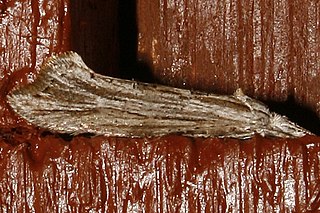
Ypsolopha falciferella is a species of moth in the family Ypsolophidae first described by Lord Walsingham in 1881. It is found throughout much of North America, including British Columbia, Alberta, Manitoba, Saskatchewan, Michigan and Maryland. It is known from a wide variety of habitats, including mixed wood forests, riparian habitats and semi-arid scrubland.
Ypsolopha buscki is a moth of the family Ypsolophidae. It is known from the United States, including Arizona.

Ypsolopha is a genus of moths of the family Ypsolophidae. It is the type genus of the family and comprises over 120 described species.
Augustus Busck was a Danish-American entomologist with the United States Department of Agriculture's Bureau of Entomology. He is best known for his work with microlepidoptera, of which he described over 600 species. His collections of Lepidoptera from North America and the Panama Canal Zone are held by the National Museum of Natural History in Washington, D.C.
Abrenthia is a genus of Glyphipterigidae. It was described by August Busck in 1915, and contains only one species Abrenthia cuprea. This species is found in North America, including Florida, Illinois and Iowa.
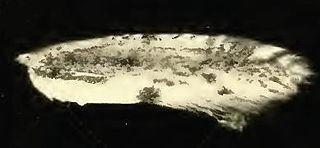
Argyresthia belangerella is a moth of the family Argyresthiidae first described by Vactor Tousey Chambers in 1877. It is found in Canada. It might be only a variety of Argyresthia conjugella.
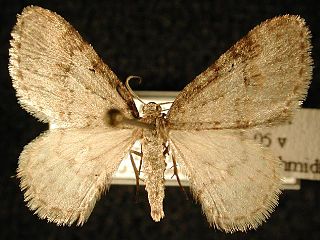
Venusia pearsalli, or Pearsall's carpet moth, is a moth in the family Geometridae. The species was first described by Harrison Gray Dyar Jr. in 1906. It is found in western North America, from Alaska, Alberta and British Columbia, through Washington and Oregon to California.
Aethes rana is a species of moth of the family Tortricidae. It was described by August Busck in 1907. It is found in the United States, where it has been recorded from Illinois, Indiana, Kentucky, Maryland, Ohio and Pennsylvania.

Phalonidia lavana, or Platphalonidia lavana, is a species of moth of the family Tortricidae, the subfamily Tortricinae, and the tribe Cochylini. It has a terrestrial habitat and is found throughout North America. It does not have a Global Conservation Status Rank.
Archips dissitanus, the boldly-marked archips moth, is a species of moth of the family Tortricidae. It is found in North America, where it has been recorded from Alberta to Nova Scotia and south to Minnesota and North Carolina in the Appalachian Mountains. The habitat consists of boreal forests.
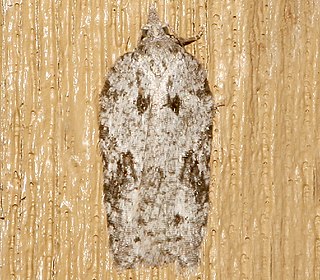
Acleris maximana is a species of moth of the family Tortricidae first described by William Barnes and August Busck in 1920. It is found in North America, where it has been recorded from Alberta, British Columbia, California, Maryland, Massachusetts, Montana, New Brunswick, North Carolina, Ontario, Pennsylvania, Saskatchewan, Tennessee, Utah and Washington.
Epermenia imperialella is a moth in the family Epermeniidae. It was described by August Busck in 1906. It is found in North America, where it has been recorded from Manitoba, Alberta, Iowa and Pennsylvania.
Gnorimoschema gibsoniella is a moth in the family Gelechiidae. It was described by August Busck in 1915. It is found in North America, where it has been recorded from Alberta, Manitoba and Illinois.









